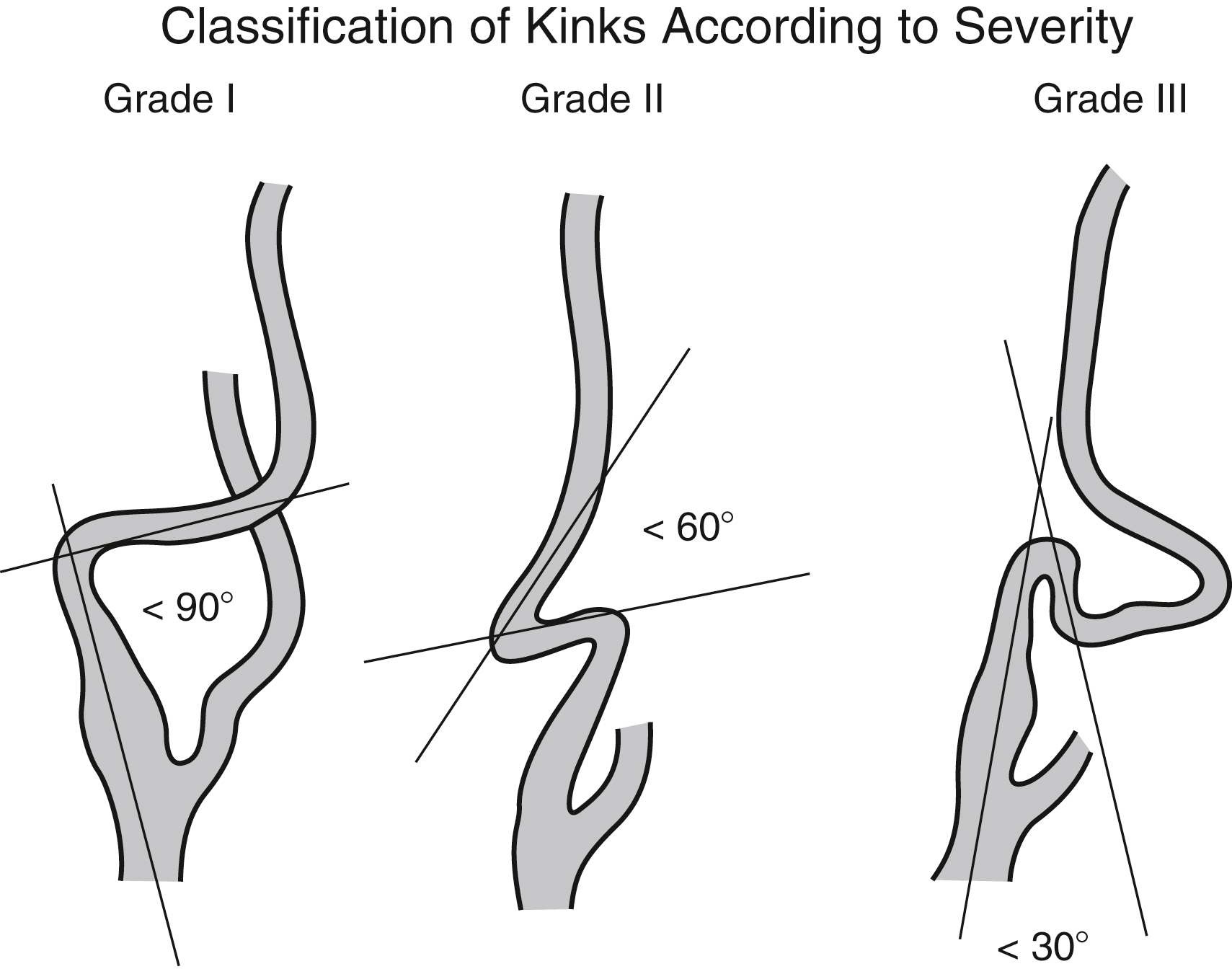Christopher J. Smolock, Javier E. Anaya-Ayala, Daynene Vykoukal, Alan B. Lumsden and Mark G. Davies Most anatomic descriptions of the cervical carotid artery note a straight course to the skull base free of branches. Although angulated cervical carotid arteries, especially the internal carotid artery (ICA), are a relatively common finding in adults (∼25%), the excessive elongation of the internal carotid artery in a confined space results in a curvature termed coiling. Kinking of the internal carotid artery also results from elongation of the vessel, but it is defined as an angulation of the vessel of 90 degrees or less. Kinks are often associated with stenoses of the vessel and have been linked with arterial wall degeneration and loss of elasticity. Coiling and kinking of the vessels may also be associated with the formation of an actual looped vessel. This can result in the formation of single or double vessel loops. Metz and colleagues and Weibel and Fields have each proposed a grading system (Figure 1). Togay-Isikay modified and combined these grading systems into a single set of criteria (Table 1). TABLE 1 Modified Criteria of Metz and Weibel-Fields by Togay-Isikay
Carotid Artery Kinks and Coils
Malformation
Description
Tortuosity
S- or C-shaped elongation or undulation of ICA course
Mild kinking
Acute angulation of ICA between segments forming kink ≥60 degrees
Moderate kinking
Acute angulation of ICA between segments forming kink 30–60 degrees
Severe kinking
Acute angulation of ICA between segments forming kink <30 degrees
Coiling
Exaggerated S shape or circular configuration of ICA course
Stay updated, free articles. Join our Telegram channel

Full access? Get Clinical Tree



